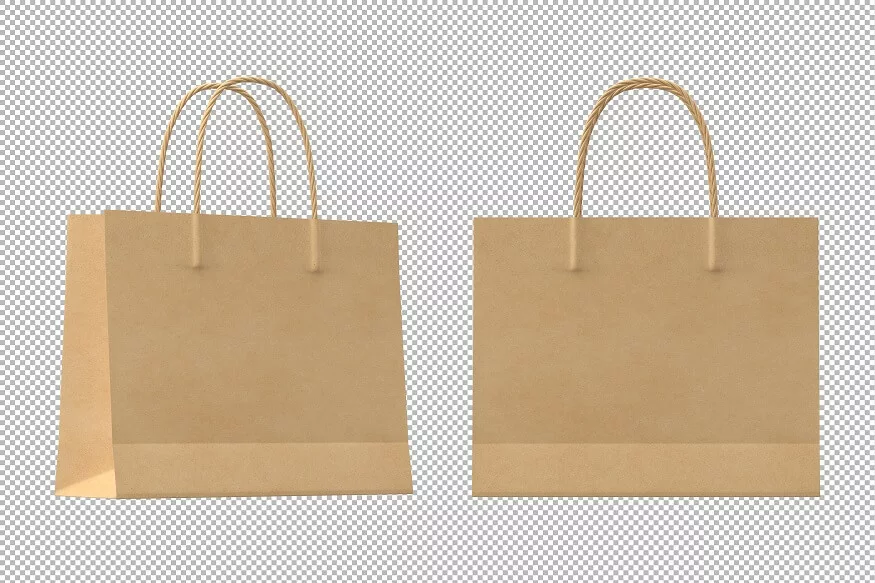In our pursuit of a more sustainable and environmentally conscious lifestyle, the humble paper bag has emerged as a true hero in the fight against plastic waste. These bags not only provide a biodegradable alternative to their plastic counterparts, but they also offer a wide range of benefits in terms of versatility and eco-friendliness. Throughout this guide, we will delve into the advantages of using paper bags, highlighting their positive impact on the environment. Additionally, we will embark on an enjoyable and creative activity: crafting your very own paper bags.
How to Make Your Own Paper Bags
Let’s dive into a fun and engaging activity for both children and adults alike: making your paper bags! This hands-on craft not only provides a practical use for recycled materials but also allows for creative expression. Here’s a step-by-step guide on how to create your very own paper bags:
Materials Needed
- Large sheets of recycled paper (newspapers or old wrapping paper work well)
- Ruler
- Pencil
- Scissors
- Glue or tape
- Decorative materials (optional)
Steps
Step 1: Prepare the Paper
Start by laying out a large sheet of recycled paper on a flat surface. If you’re using newspapers or old wrapping paper, make sure they are clean and free of any sticky residue.
Step 2: Measure and Mark
Using a ruler and a pencil, measure and mark the dimensions of your desired bag on the paper. A typical size for a small gift bag is around 20cm x 10cm x 5cm, but feel free to adjust based on your preferences.
Step 3: Cut the Paper
Carefully cut along the marked lines using scissors. This will be the main body of your paper bag.
Step 4: Fold the Paper
With the cut-out paper in front of you, fold it in half lengthwise, aligning the edges neatly. Crease the fold well to create a clean, sharp edge.
Step 5: Create the Bottom Flap
On one of the open ends, fold about 2-3 centimetres of the paper towards the centre and crease it well. This will form the bottom flap of the bag.
Step 6: Secure the Sides
Apply glue or use tape along the edges of the folded paper, securing the sides of the bag. Press the edges together firmly to ensure a strong bond.
Step 7: Shape the Bag
Open up the bag and gently press the bottom flap inward, creating a flat base. This will give your bag a box-like shape.
Step 8: Add Handles (Optional)
If you’d like to add handles to your paper bag, cut two strips of paper and attach them to the inside of the bag using glue or tape. Ensure they are securely fastened for carrying.
Step 9: Decorate (Optional)
Let your creativity shine by decorating the paper bag with drawings, stickers, or any other decorative materials you have on hand.
Step 10: Let It Dry
Allow your handmade paper bag to dry completely before using it. Once dry, it’s ready to be filled with goodies, gifts, or anything else you fancy!
Also Read: 12 Fun Plant Crafts for Preschoolers To Play And Learn
Tips for a More Sustainable Craft:
- Use recycled materials for decoration, such as old magazines or scrap paper.
- Experiment with natural dyes or plant-based inks for a more eco-friendly colouring option.
- Encourage children to explore their creativity by reusing materials they find around the house.
The Advantages of Paper Bags
Here are some advantages of a paper bag
- Eco-Friendly Appeal:
- Reduced Plastic Dependency:
- Customisation Options:
- Sturdy and Reliable:
- Breathable Material:
- Ease of Disposal:
- Supports Sustainable Forestry:
- Versatility in Use:
- Positive Perception:
- Regulatory Compliance:
One of the standout advantages of paper bags lies in their eco-friendly nature. Made from renewable resources, they are easily recyclable and biodegradable, contributing to a more sustainable environment.
Unlike their plastic counterparts, paper bags don’t rely on non-renewable resources. Opting for paper bags helps reduce the world’s dependence on plastic and contributes to the global movement for a cleaner, greener planet.
Paper bags offer a versatile canvas for creativity. They can be easily customised with various prints, designs, and logos, making them an excellent tool for brand promotion and a unique touch to gift packaging.
Contrary to popular belief, paper bags are not flimsy. They come in various thicknesses, providing options for robust and durable packaging suitable for carrying heavier items without the worry of tearing or breaking.
Paper bags allow the contents to breathe, making them an ideal choice for packaging items that may need ventilation, such as certain types of food. This breathable quality also prevents the build-up of moisture, keeping contents fresh.
When disposed of, paper bags break down naturally, reducing the burden on landfills. This makes them an environmentally responsible choice compared to plastic bags, which can take centuries to decompose.
The production of paper bags often involves responsibly managed forests. Choosing paper bags encourages sustainable forestry practices, ensuring that trees are replanted and habitats are preserved for future generations.
Paper bags have a wide range of applications beyond just carrying items. They are frequently repurposed for crafts, storage, and even as gift wraps, adding an extra layer of utility beyond their initial use.
Many consumers view businesses that use paper bags as more environmentally conscious and responsible. This positive perception can contribute to a company’s brand image and customer loyalty.
In some regions, there are regulations or taxes in place to discourage the use of plastic bags. Opting for paper bags ensures compliance with such regulations, showcasing a commitment to responsible business practices.
Also Read: Insects And Bug-Themed Crafts And Activities For Children To Enjoy
In the journey towards a more sustainable and eco-conscious lifestyle, the advantages of paper bags are clear. From their biodegradability to their versatility, paper bags offer a practical and environmentally friendly alternative to plastic. EuroSchool engages their students in a simple yet enjoyable activity like making paper bags. This not only provides a creative outlet but also instills a sense of responsibility towards the environment in both children and adults. So, grab some recycled paper, let your imagination run wild, and enjoy the magic of crafting your very own sustainable paper bags!









